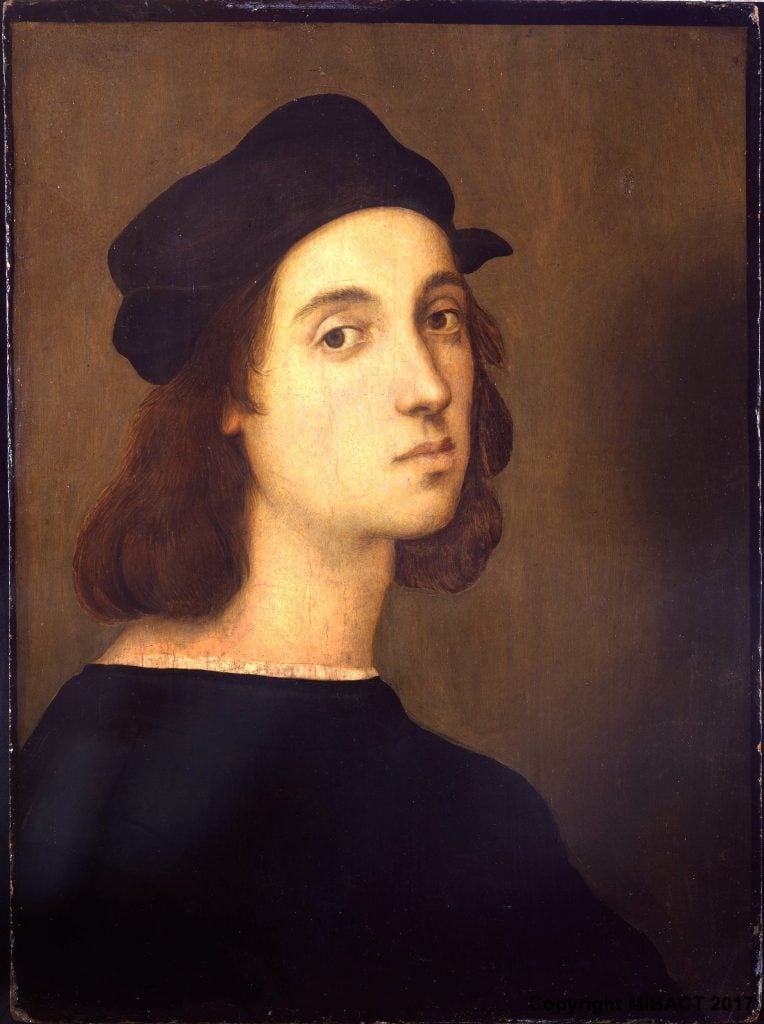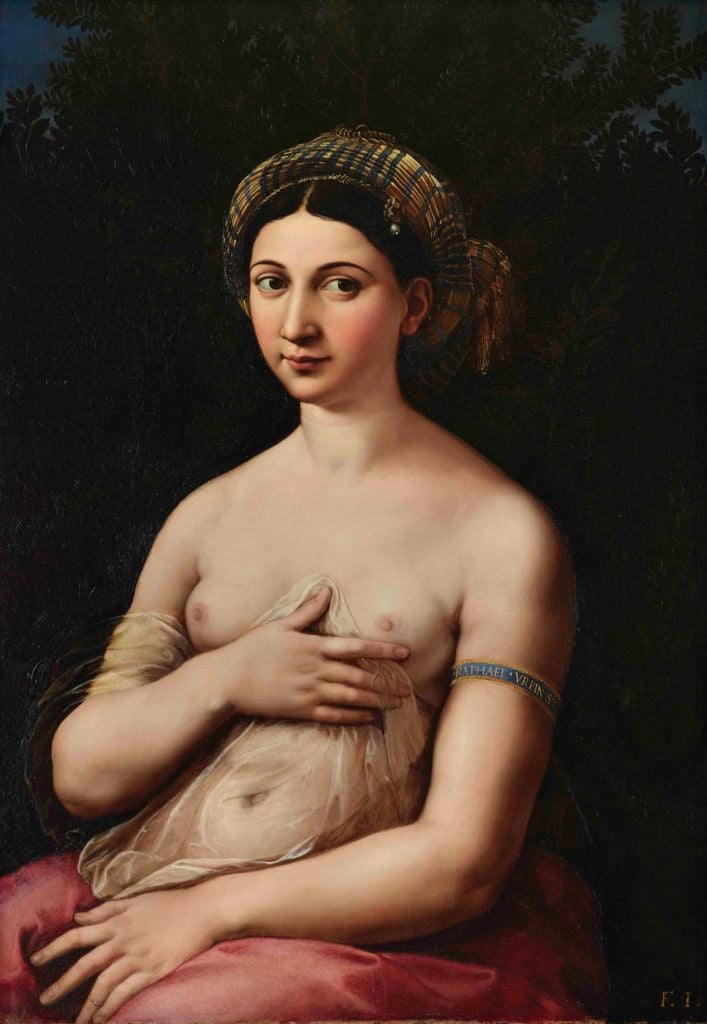Art World
Art Bites: Did Raphael Die From Too Much Sex?
"Raphael was a very amorous man who was fond of women," Vasari wrote.

"Raphael was a very amorous man who was fond of women," Vasari wrote.

Richard Whiddington

The Renaissance prodigy Raphael was, to paraphrase 16th-century gossip Giorgio Vasari, a real mensch.
Generous to all no matter their station, Raphael treated artisans like his own children and lived more like a prince than a painter on account of the retinue of acolytes that followed him around. “Even animals,” Vasari gushed, “loved him”.
When he died aged 37, Pope Leo X wept bitterly. The cause of death suggested by Vasari, however, is slightly less sacrosanct. Raphael had pursued a passionate love affair “beyond all moderation,” an excess that in the Medieval view of health had destabilized his humors.
He was struck down with a high fever, but when the doctors sent by the Pope arrived, he was too modest to reveal the true cause of his ailment. Raphael was treated with bloodletting, the period remedy for overheating. His condition rapidly deteriorated and within eight days he had died—not before providing his mistress with the means to live honesty. A true gent indeed.
Young, handsome, and supremely talented, Raphael had a reputation for all-consuming love affairs. In 1512, he became distracted and lethargic while painting the frescos for the suburban villa of Agostino Chigi, a prominent banker and Renaissance patron. The problem? He was besotted with Margherita Luti, colloquially known as La Fornarina or the baker’s daughter.

Raphael, Triumph of Galatea (1512). Photo: Getty Images.
Chigi’s clear-eyed solution was to move Luti into Raphael’s living quarters. He promptly completed the frescos including, perhaps tellingly, The Triumph of Galatea, a scene in which the sea-nymph soars heavenward after a doomed love affair with the moral Acis.
A painting of Luti was discovered in Raphael’s studio following his death. She’s pictured seated, nude from the waist up, flush in the cheeks, a smile playing at the corner of her lips. It’s a knowing, intimate portrait. The affection between artist and subject declared in a band wrapped around Luti’s arm with Raphael’s name on it.

Raphael, Portrait of a woman in the role of Venus (Fornarina) (c.1519–20). Rome, Gallerie Nazionali di Arte Antica – Palazzo Barberini. Photo: Gallerie Nazionali di Arte Antica, Roma. (MIBACT).
Scholars have contested the attribution, so too the story that Luti rebuffed Raphael’s frequent marriage proposals. But the legend of the artist’s amorousness endures, one strengthened by Vasari’s telling of how Raphael saw marriage as a “noose” and managed to squirm out of an arrangement with a cardinal’s niece. The story captured Pablo Picasso’s imagination. He detailed the love affair between Raphael and La Fornarina in a frenetic series of etchings (in one, the Pope gazes on through a keyhole, in another Michelangelo scowls under the bed).
Did Raphael really die of excessive sex coupled with medical quackery? Recent scientific analysis suggests not, though bloodletting, whether by leach or vein cutting, certainly weakened him. Historians have ruled out malaria, typhoid, and syphilis, long the go-to explanation.
Instead, Italian medical researchers have pointed to pneumonia, a virus similar to the one that ravaged the globe in recent years.
What’s the deal with Leonardo’s harpsichord-viola? Why were Impressionists obsessed with the color purple? Art Bites brings you a surprising fact, lesser-known anecdote, or curious event from art history.